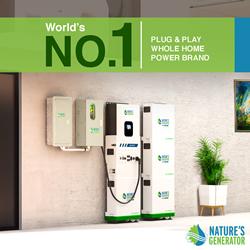SEPA Reports Envision Five Future Business Models for Investor-Owned Utilities
WASHINGTON, D.C. -- The Smart Electric Power Alliance (SEPA) announces the release of two new reports documenting the role of the educational nonprofit's 51st State Initiative as a catalyst for the U.S. energy transition and for ideas and best practices that are now part of the energy industry mainstream.
• "A Journey Across the 51st State" summarizes how industry thinking has changed over the past four years and the three stages of the initiative.
• "Understanding and Evaluating Potential Models for the Future Electric Power Utility" takes a deeper look at five different business models, or constructs, utilities can use as they map out their future goals.
"When we started the initiative in 2014, we wanted to get people thinking beyond local policy debates -- then, mostly about net metering -- to focus on a collective future we could all work toward," said SEPA President and CEO Julia Hamm. "The initiative has always been about figuring out how to get to that future. Now we want to accelerate the process through a sharper focus on four ‘pathways' -- grid integration, regulatory innovation, electrification of transportation and utility business models."
Key components of the two reports include:
• Analysis of the complex set of criteria and principles -- ranging from safety and reliability to market efficiency and consumer empowerment -- to be considered in looking at a utility's current business model and charting a path for the future.
• Discussion of five potential utility business models or constructs -- wires only, distribution system platform, distributed energy resource (DER) integrator, DER provider, energy services company -- and the various hybrids likely to be developed based on local markets and policies.
• A set of tools and frameworks to be used for stakeholder engagement and the development of "least-regrets" moves toward an optimal integration of DERs on the grid.
"The 51st State helped bridge a tough gap between utilities and other stakeholders - something SEPA is consistently able to do because of its diverse membership and credibility with market participants, developers, utilities, enviros, regulators, and consultants," said Mike O'Boyle of America's Power Plan.
"The 51st State provided a focused opportunity for outside the box thinking, a chance for thought leaders to shine, channeling the directionality of thought. By convening, the 51st State made insights more constructive and applied than what existed before." said John Hewa of Rappahannock Electric Cooperative.
"The transition of the 51st State Initiative does not mean we are stopping the conversation or our engagement with the community of industry leaders and experts who came together around the effort," said Senior Manager Christine Stearn. "The thoughts and challenges we identified have become too important to continue as a stand-alone initiative."
These challenges are now woven into the fabric of SEPA's future through our 2019 pathways and their work to support and facilitate action in Puerto Rico and Washington, DC.
Featured Product

Nature's Generator MyGrid 10K
A 10,000W plug & play whole-home generator with a 10kWh LiFePO4 battery for reliable backup power. Features easy setup, flexible 120V/208-240V input, and solar/wind charging. Expandable with extra batteries or solar panels, and can pair two units for 20,000W for even larger energy needs. Powers your home during power outages, reduces electricity costs, and supports sustainable energy.
